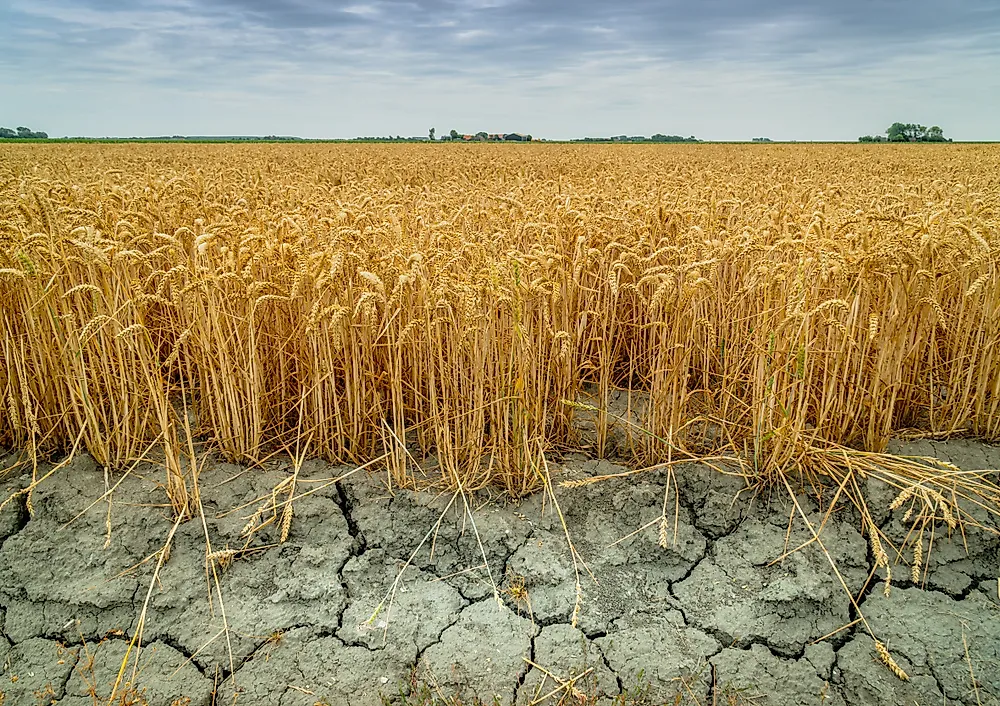What Are The Different Types Of Drought?

A drought usually refers to a period of lower-than-average precipitation leading to sustained periods of low water supply and the resultant negative effects of such an event. Droughts often lead to famines and result in the deaths of humans, animals, and plants. A list of the different types of droughts and their causes is listed below.
Meteorological/Climatological Drought
Droughts caused due to meteorological factors are most common in nature and usually precede other types of droughts. Such an event is caused by a prolonged period of low precipitation. Dry weather patterns dominate the area experiencing a climatological drought. The severity of such droughts depends on the magnitude of the shortfall of precipitation, as well as the duration of the shortfall event.
Agricultural Drought
An agricultural drought occurs when crop growth in an area is adversely affected due to drought. Often, meteorological droughts lead to agricultural droughts. Low levels of precipitation over a sustained period of time can lead to crop failure. However, such droughts can also occur in the absence of changes in precipitation levels. Poor agricultural practices can occasionally lead to changes in soil conditions or soil erosion that will decrease the amount of water available to crops for proper growth. Agricultural droughts are more common in non-irrigated agricultural areas where a plant’s source of water is largely dependent on prevailing weather conditions.
Hydrological Drought
Hydrological droughts occur when a water supply becomes scarce due to lower water levels in water bodies likes lakes, rivers, and reservoirs. Often, meteorological droughts precede hydrological droughts since low levels of rainfall and high temperatures may cause water bodies to dry up. However, changes in weather conditions are not always the cause of hydrological droughts. For example, when a country or region diverts a vital water source towards its own territory, leaving a neighboring country or region dry, it can lead to a drought in the latter area. Kazakhstan suffered from drought-like conditions under Soviet rule when water from the Aral Sea was diverted to other nations. The country was thus offered a large sum of money by the World Bank to overcome the resulting losses.
Socioeconomic Drought
A socioeconomic drought occurs when the demand for an economic good is greater than its supply due to a water deficit created by shortfalls in precipitation and other weather-related adverse changes. Many goods like food grains, fodder, fish, and hydroelectricity need an adequate water supply for sufficient production. For example, Uruguay suffered a downfall in hydroelectric power production from 1988 to 1999. A meteorological drought in the country led to a deficit of water in the streams generating hydroelectric power. Thus, the government had to resort to the more expensive petroleum as a source of fuel and implement strict energy conservation measures.











